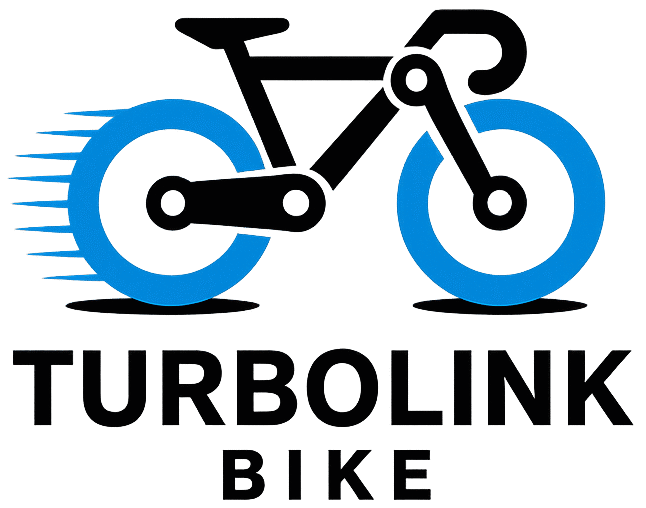How to Choose the Right High-End Bicycle for Your Ride
Introduction: The Quest for the Perfect High-End Bicycle
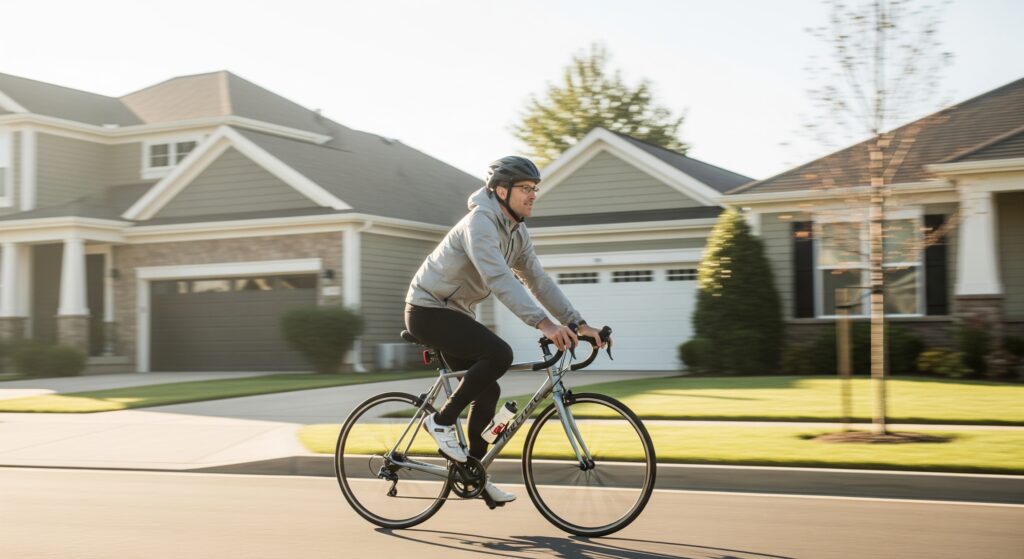
There’s a moment every rider remembers: the first time you glide on a bike that doesn’t just move — it responds. Fluid. Precise. Effortless. If you’ve experienced that, even once, you already know why choosing the right high-end bicycle matters so much. And if you haven’t yet, you’re about to.
Let’s be honest — the premium bike market can feel like a labyrinth. Carbon vs. titanium, SRAM vs. Shimano, road vs. gravel… It’s easy to fall into the specs spiral. But beneath the jargon and tech battles is a single, deeply personal truth: the best high-end bike is the one that feels made for you.
In this guide, we’ll walk you through everything that really matters when choosing a high-end bicycle. Not just frame materials and components — but riding style, fit, brand philosophy, and even the emotional X-factor you can’t always name but instantly feel. You’ll learn how to spot the difference between clever marketing and true craftsmanship. And yes, we’ll talk budget without sidestepping the elephant in the room: is it worth the price? (Spoiler: sometimes yes, sometimes no.)
Whether you’re upgrading from a reliable ride or stepping into the luxury lane for the first time, this guide will help you make a choice that’s not just smart — it’s personal, intuitive, and thrilling.
Why trust this guide?
Because it was written with the mindset of a rider, not a salesperson. We’ve stripped away the fluff to focus on what genuinely impacts your ride. And if you’re wondering what people typically ask when searching for their perfect two-wheeled companion
FAQ —What defines a “high-end” bicycle?
Q: How do I know if a bike is considered “high-end”?
A: High-end bicycles typically start at around $3,000 and climb from there. What sets them apart isn’t just price — it’s the quality of materials (like carbon or titanium), advanced engineering, top-tier components (e.g., Shimano Dura-Ace, SRAM Red), and brand pedigree. They’re designed for performance, longevity, and a riding experience that feels almost telepathic.
Understanding Your Riding Style
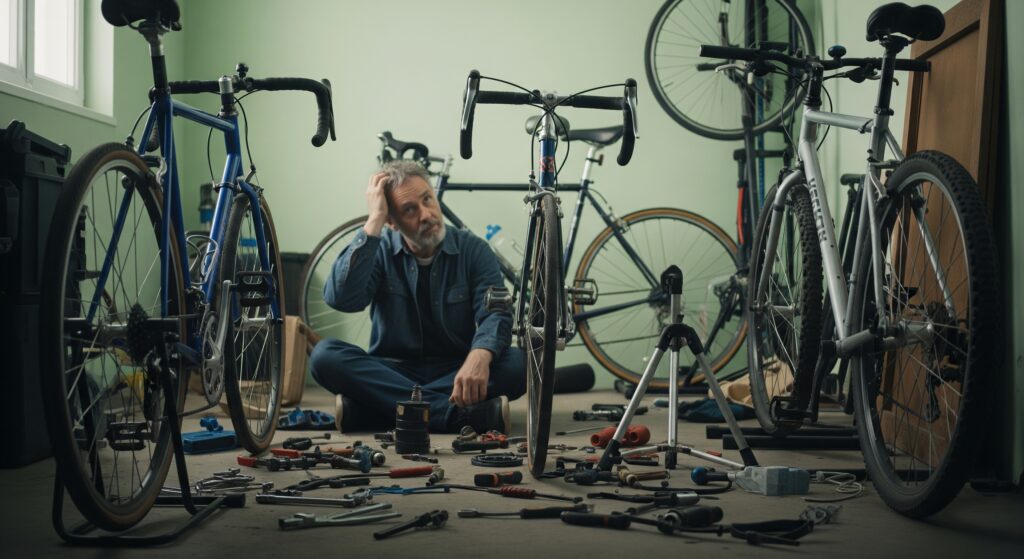
Before you even glance at frame materials or gear ratios, stop and ask: What kind of rider am I? This isn’t just a philosophical question — it’s the compass that guides every decision that follows. Because the wrong high-end bicycle, no matter how advanced, can feel like overkill or underwhelming if it’s not built for your terrain, pace, or passion.
Let’s break down the most common riding styles — not as rigid categories, but as overlapping paths you might find yourself switching between.
Road Cycling — Speed, Precision, and Pure Asphalt Joy
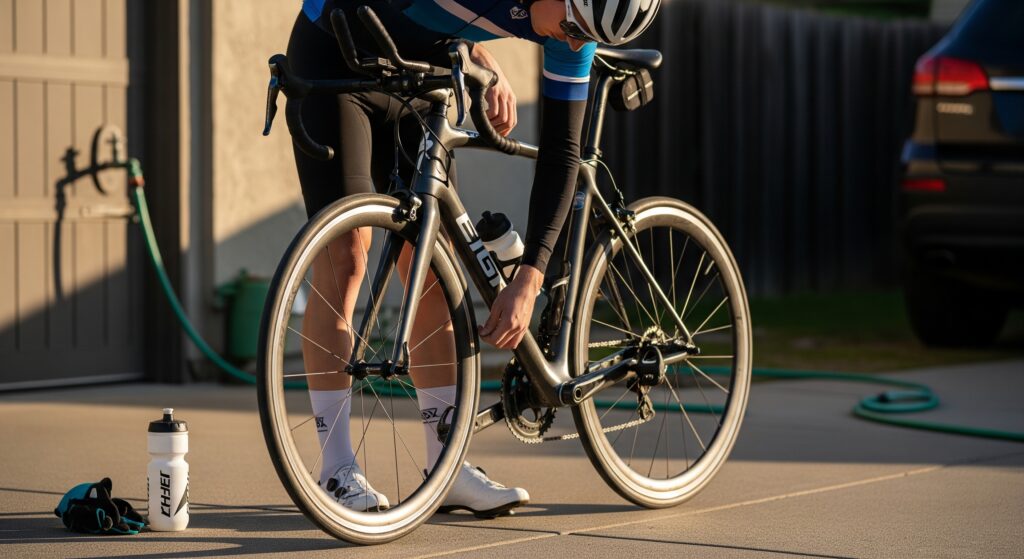
If your idea of a good day is hammering out 50+ miles of silky pavement, tucked in an aero position, hunting PRs or drafting in a peloton, you’re in road cycling territory. High-end road bikes in this space prioritize weight savings, aerodynamic design, and responsiveness. Think carbon frames, electronic shifting, and feather-light wheelsets.
But here’s the nuance: not all road cyclists are racers. Endurance models offer a more relaxed geometry for long-distance comfort, while still packing performance punch.
Look for:
- Carbon or titanium frames
- Electronic shifting (Shimano Di2, SRAM AXS)
- Disc brakes for all-weather reliability
- Geometry that matches your flexibility and goals (race vs. endurance)
Gravel & Adventure — Where Curiosity Becomes a Path
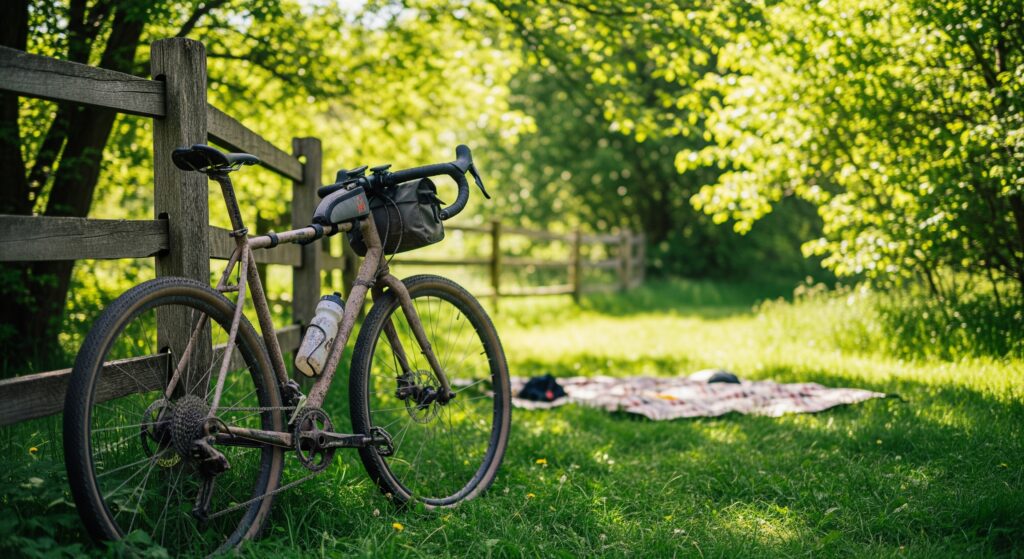
More people are discovering the magic of “gravel” — not just a surface, but a mindset. If you like the idea of veering off the main road, exploring forest paths, or doing long mixed-terrain rides, a high-end gravel bike might be your soulmate.
These bikes blend road-bike efficiency with off-road capability, often sporting wider tires, extra mounting points, and geometry tuned for stability over speed.
Expect:
- Clearance for 40–50mm tires
- Rugged but light frame materials (aluminum, carbon, or even steel)
- Versatile drivetrains with wide gearing ranges
- Frame mounts for bags, bottles, and adventures
Mountain Biking — Adrenaline Meets Engineering
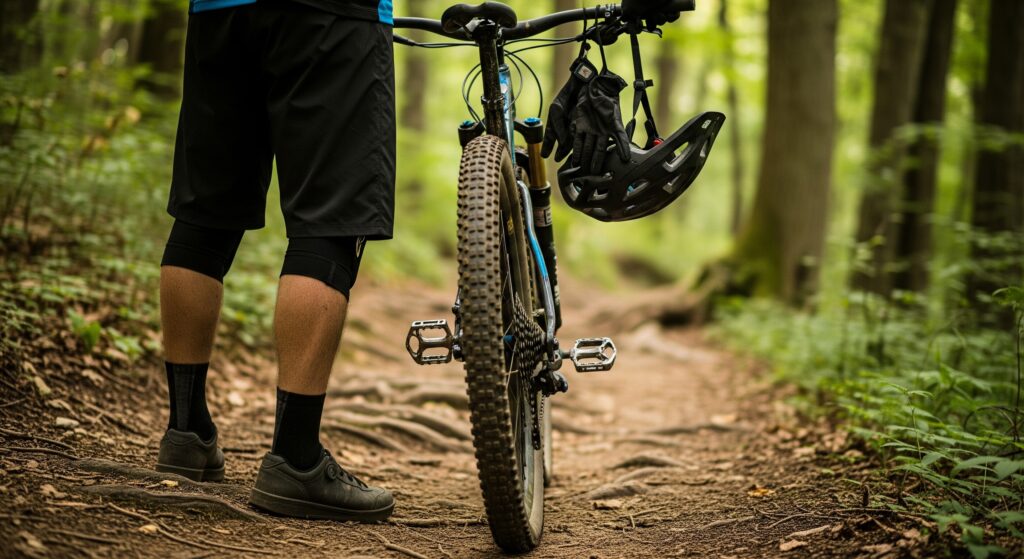
Whether you’re descending singletrack at warp speed or grinding up technical climbs, high-end mountain bikes are marvels of suspension and geometry. If your terrain is dirt, roots, and rocks, and your fun involves getting airborne (or close to it), MTB is your zone.
Sub-genres matter here: cross-country (XC) bikes focus on speed and climbing, while enduro and downhill bikes handle aggressive trails and big hits.
Key traits:
- Full-suspension or hardtail setups
- Dropper seatposts
- Tubeless tires for better grip and fewer flats
- Slack head angles and long wheelbases for stability
Commuting & Touring — Everyday Utility, Elevated
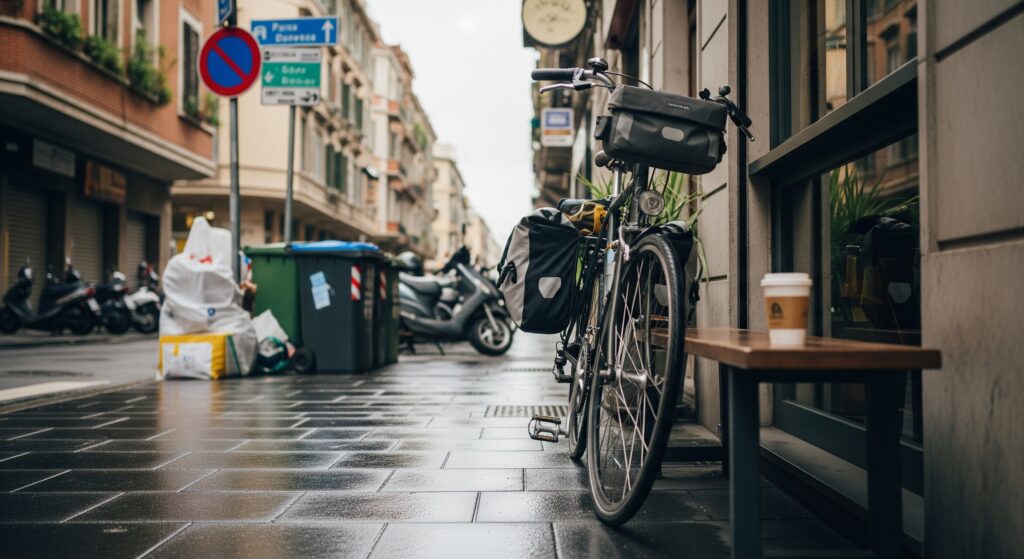
Yes, even commuters deserve high-end rides. If you’re riding to work, across countries, or just down to the market — and want the best — there are performance-focused touring and commuter bikes that blend durability, comfort, and style.
They may not look flashy, but these bikes can last decades with proper care, and often include extras like integrated lights, belt drives, or internal gear hubs.
Ideal features:
- Steel or titanium frames for long-term durability
- Rack and fender mounts
- Low-maintenance drivetrains (e.g., Rohloff or Pinion systems)
- Comfort-focused geometry
FAQ — Can I use one high-end bike for multiple styles?
Q: Is it realistic to get a single bike that covers road, gravel, and commuting?
A: Some bikes (especially gravel and endurance road bikes) are designed for versatility, and can handle multiple roles with a few component tweaks. However, no one bike does everything perfectly. If you’re straddling disciplines, a “quiver killer” gravel bike with dual wheelsets (one for road, one for dirt) might be your best bet.
Decoding Frame Materials: What Your Bike Is Made Of Matters
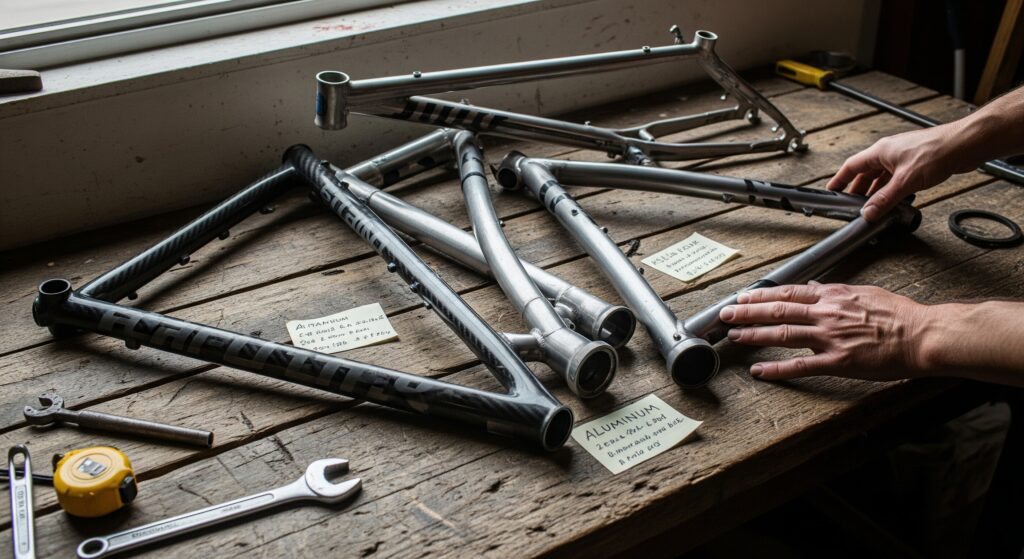
If the bike were a body, the frame is its skeleton — it shapes everything: strength, weight, flex, even personality. For high-end bicycles, the frame isn’t just about holding parts together — it’s a precision-engineered conversation between you and the road, trail, or gravel path. But here’s the thing: each material speaks a different language.
Choosing the right frame material is less about chasing the lightest option and more about matching your riding goals, comfort thresholds, and — let’s be honest — aesthetic preferences.
Carbon Fiber — The Race-Ready Whisper
Carbon frames are the darlings of pro pelotons and weight-weenie forums — and for good reason. When engineered well, carbon fiber offers an unbeatable blend of stiffness and lightness, translating your pedal stroke into instant speed.
But it’s not just about speed. Carbon can be tuned for comfort, too — think subtle vibration damping that saves your hands and back on long rides.
Best for:
- Road racers, triathletes, and performance-focused riders
- Those chasing lightweight without sacrificing strength
- Customizable ride feel (brands tune flex/stiffness zones)
Caveats:
- Susceptible to damage from crashes or poor handling
- Pricey to repair or replace
- Quality varies drastically — not all carbon is equal
Titanium — The Eternal Ride
There’s something mythical about titanium. It doesn’t rust. It shrugs off abuse. It rides with a smoothness that’s hard to describe but instantly felt. And it lasts — often for life.
While not the lightest or cheapest, high-end titanium frames are often heirloom-level investments. Think: ride it for decades, then pass it down.
Best for:
- Endurance roadies, gravel explorers, touring enthusiasts
- Riders who value comfort, durability, and craftsmanship
- Those who don’t mind paying more upfront for long-term payoff
Watch out for:
- Fewer off-the-rack options (more boutique or custom brands)
- Slight weight penalty compared to carbon
Aluminum — The Modern Workhorse
Once seen as stiff and harsh, modern aluminum has come a long way. Today’s high-end aluminum bikes offer a solid mix of performance and affordability, especially with advanced butting techniques and hydroforming.
You’ll often see aluminum in race-worthy crit bikes, urban commuters, or as an entry point to performance builds.
Best for:
- Budget-conscious riders seeking performance
- Commuters who need a tough, no-nonsense frame
- Those not obsessed with “saving grams”
Downsides:
- Harsher ride feel (though carbon forks help)
- Doesn’t age as gracefully as titanium or steel
Steel — The Cult Classic
Steel is real — not just a rhyme, but a belief. High-end steel frames deliver incredible ride feel and resilience. They’re heavier, yes, but they’re also supple and timeless, often handmade with lugs or fillet brazing that turn the frame into art.
You won’t find steel on many podiums today, but for long-distance, loaded touring, or aesthetic joyrides? It’s unbeatable.
Ideal for:
- Touring, commuting, or retro-inspired builds
- Riders who value comfort and visual craftsmanship
- Fans of bikes with soul, not just speed
FAQ — What’s the most “future-proof” frame material?
Q: If I’m spending a lot, which frame material will last the longest and stay relevant?
A: Titanium wins for long-term durability and timelessness — it won’t rust, ages beautifully, and stays comfortable for decades. Steel is close behind. Carbon offers performance but requires more care, while aluminum is budget-friendly but less future-proof for premium builds.
The Importance of a Perfect Fit: When the Bike Disappears Beneath You
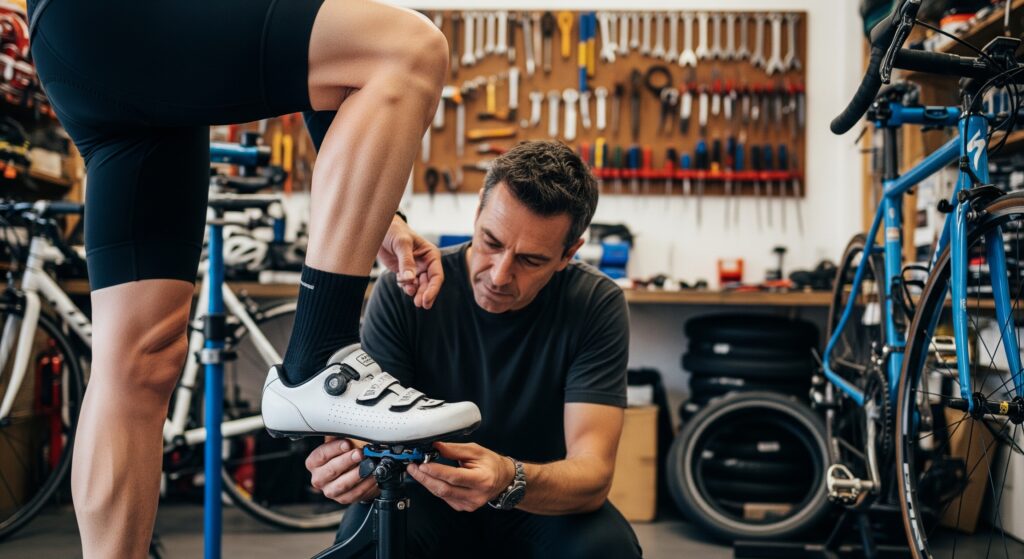
Let’s get one thing straight: no matter how much you spend, if the bike doesn’t fit you, it’s not high-end — it’s high-maintenance. The truth? A $3,000 bike that fits like a glove will outperform a $10,000 bike that doesn’t. Period.
You shouldn’t just ride your bike — you should feel like you’re wearing it. Or better yet, like it’s an extension of your will. And that only happens when the fit is dialed in, down to the millimeter.
Professional Fitting — The Overlooked Superpower
Too often, riders spend hours obsessing over gear and five minutes adjusting their saddle. That’s backwards. A professional bike fitting is one of the best investments you can make — especially at the high-end level.
Fitting isn’t just about saddle height or handlebar width. It’s about biomechanics, flexibility, injury history, riding goals, and yes, even your commute or local roads. A good fitter will ask questions you never thought mattered and make micro-adjustments that change everything.
Fitting sessions usually cover:
- Foot and pedal alignment
- Saddle type and position
- Reach, stack, and handlebar fit
- Cleat placement and leg tracking
- Posture optimization for power or comfort
Geometry Isn’t Just Numbers — It’s Feel
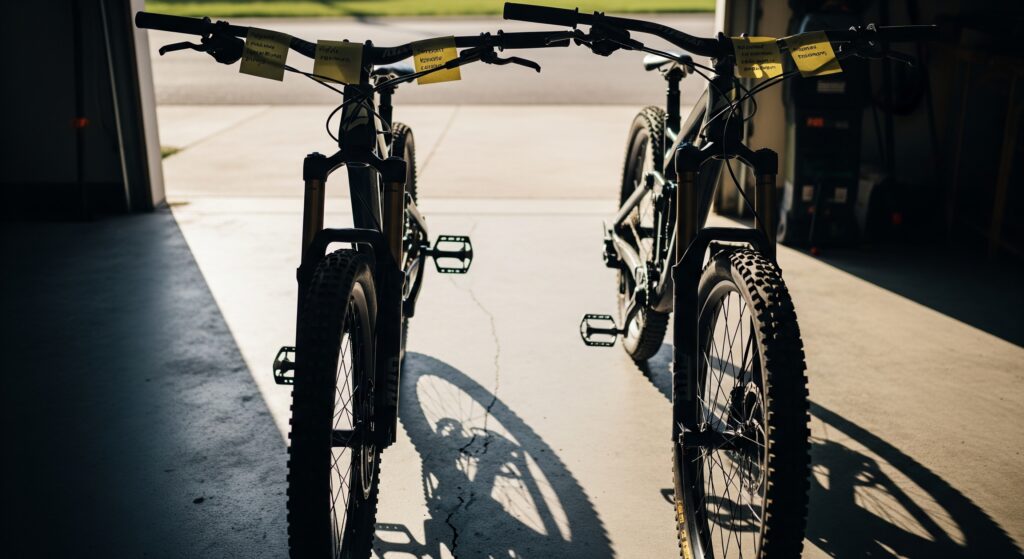
Ever looked at a bike’s geometry chart and felt like you were reading alien math? You’re not alone. But hidden in those numbers is the soul of the ride.
For instance:
- A slacker head angle = more stability (great for gravel and mountain bikes)
- A longer reach = racier, more aggressive posture
- A higher stack = upright comfort for endurance or commuting
Different brands tune geometry in unique ways. What feels amazing on a Specialized might feel awkward on a Bianchi — even if the size tags match.
Small Tweaks, Big Payoffs
Sometimes, fit issues are subtle. You might not feel “pain” — just nagging discomfort. Numb hands after 30 minutes? Knees sore post-ride? Lower back tension on climbs? Those are fit red flags, not growing pains.
What’s wild is how small the solutions often are:
- A 5mm spacer under your stem
- A saddle tilt adjustment
- Moving your cleats 3mm back
These sound minor. But in the world of fit, millimeters are miles.
FAQ — Do I need a new fit if I change bikes?
Q: If I get a new high-end bike, do I need another professional fit?
A: Yes — even if it’s the same size and brand. Frame geometry, seat tube angles, and component spec can differ slightly, which changes your posture and pressure points. A new fit ensures your new investment feels tailor-made, not just expensive.
Components and Groupsets Explained: The Machinery That Makes the Magic
Components and Groupsets Explained: The Machinery That Makes the Magic
If the frame is the skeleton, then the components are the nerves and muscles — converting your inputs into output. For high-end bicycles, these parts aren’t just functional — they define performance, reliability, and ride feel. But the world of components and groupsets can feel like alphabet soup: Di2, AXS, Red, Dura-Ace, Campy Chorus… What does it all mean?
Let’s simplify without dumbing it down. Because these aren’t just tech specs — they’re ride-defining decisions.
What Is a Groupset — and Why Should You Care?
A “groupset” refers to the integrated system of drivetrain and braking components on a bike. That includes:
- Shifters
- Derailleurs (front and rear)
- Crankset (chainrings and arms)
- Bottom bracket
- Cassette
- Chain
- Brakes
In short: if it moves the bike or stops it, it’s probably part of the groupset.
At the high-end level, groupsets aren’t just lighter — they’re smarter, faster, and smoother. And in many cases, electronic.
Electronic Shifting — Welcome to the Future
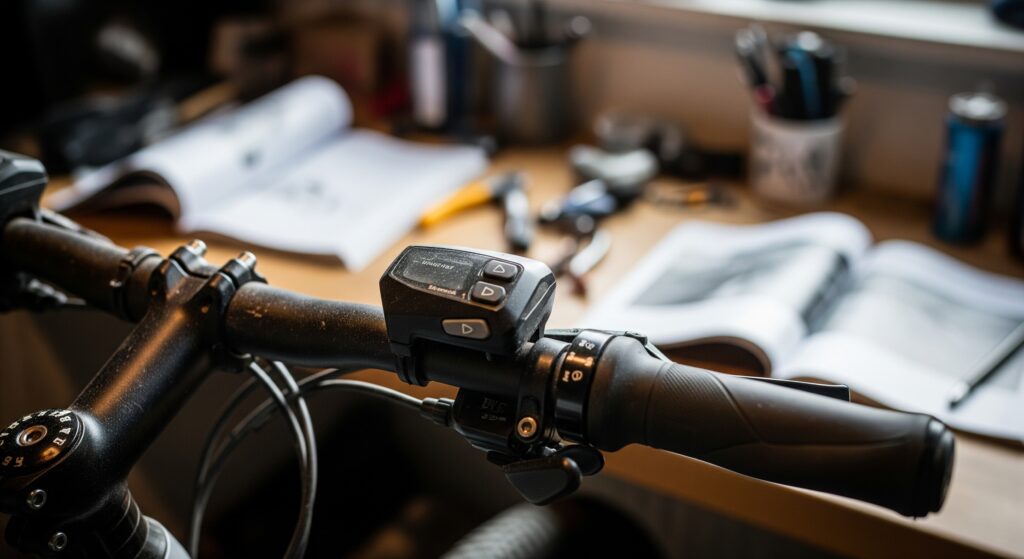
Mechanical shifting still has its fans, but electronic systems have become the gold standard for high-end bikes. Why? Precision. Consistency. Zero cable stretch. And yeah, it feels like magic.
Top contenders:
- Shimano Di2 — Ultra-smooth, legendary reliability
- SRAM eTap AXS — Wireless shifting with modular upgrades
- Campagnolo EPS — Italian elegance and snappy response
You’ll notice the difference most on climbs and under pressure, where missed shifts on mechanical systems can cost you energy — or worse, derail your rhythm entirely.
Other Components That Matter — Often More Than You Think
A premium drivetrain is great, but don’t sleep on these:
- Wheelsets: Light, aero wheels can transform a ride. Think carbon rims, sealed bearings, and tubeless-ready setups.
- Brakes: Disc brakes are now standard on most high-end bikes, offering better modulation and stopping power — especially in wet conditions.
- Cockpit (bars, stem, seatpost): Comfort starts here. Integrated setups can reduce drag, but adjustability is key.
- Saddle: Fit-dependent — never buy a bike assuming the stock saddle will work for you. It probably won’t.
Pro Tip — Balance Is Better Than Bling
Don’t max out on one component group and skimp elsewhere. A SRAM Red groupset on bargain wheels is like putting racing tires on a hatchback. Instead, aim for synergy across parts — your ride will feel more fluid, and your wallet will thank you.
FAQ — Should I choose SRAM, Shimano, or Campagnolo?
Q: Is there a “best” groupset brand for high-end bikes?
A: It depends on your preferences. Shimano Di2 is known for smooth shifting and reliability. SRAM AXS is fully wireless and easier to tweak. Campagnolo EPS offers a unique ride feel and premium aesthetics. Test-ride if possible — they each have distinct personalities.
Brand Reputation and Support: Why Who Makes Your Bike Still Matters

You wouldn’t buy a luxury car from a pop-up dealership, right? Same goes for bikes. When you’re investing thousands into a high-end bicycle, the logo on the downtube represents more than design — it reflects engineering integrity, innovation history, post-purchase support, and, yes, community culture.
The brand you choose should match not only your riding goals, but your values around service, identity, and even storytelling.
Legacy vs. Innovation — Old Names, New Tricks
Some brands have history embedded in their welds — think Bianchi, Colnago, or Pinarello. Others, like Canyon or Factor, are redefining what performance looks like in the digital era.
Here’s how to think about it:
- Heritage Brands (e.g., Bianchi, Colnago, De Rosa): Often Italian, design-forward, and tied to racing legends. You’re buying into legacy and timeless aesthetic — with premium pricing to match.
- Performance Innovators (e.g., Specialized, Trek, Giant): These brands lead in R&D, wind tunnel testing, and accessibility. They often provide the best dealer networks and upgrade paths.
- Boutique Artisans (e.g., Moots, OPEN, ENVE): Smaller-scale, often titanium or carbon-focused, and built with obsessive attention to detail. Expect exclusivity, personalization, and price tags to match.
Service Networks — The Lifeline You Didn’t Know You Needed
It’s not sexy, but it’s crucial: how easy is it to service or warranty your bike? What happens if your carbon frame cracks, or you need a new derailleur hanger on short notice?
Key service questions to ask:
- Is there a certified dealer near me?
- How long is the warranty (frame, paint, parts)?
- Do they offer crash replacement?
- Are replacement parts proprietary or standard?
- Is support handled locally or through a global office?
The Brand as Community
Beyond tech and service, there’s something emotional — even tribal — about bike brands. You might find yourself drawn to one not for its specs, but for its ethos.
Brands like Trek and Specialized excel here with lifetime warranties and wide dealer networks. Boutique brands may offer incredible customer care, but often with slower turnaround.
Ask yourself:
- Do I want to stand out or blend in?
- Do I identify with racing culture or adventure escapism?
- Would I rather ride something sleek and proven, or bespoke and rare?
Your bike reflects your riding identity. Make it count.
FAQ — Are direct-to-consumer brands like Canyon or YT worth it?
Q: What’s the catch with brands that sell only online?
A: DTC brands like Canyon, YT, or Rose offer premium builds at lower prices by skipping traditional retail. The downside? Fit, support, and test rides can be tricky. If you’re confident in your sizing and don’t need local shop support, they can be a great value.
Test Riding: The Final Verdict
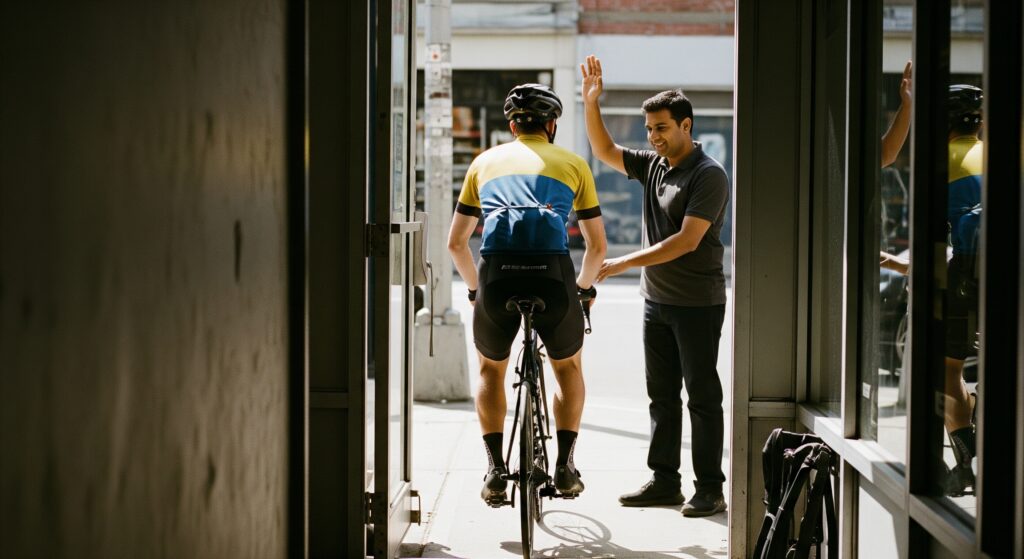
You can study geometry charts, read forums, compare weights and warranties — but until your legs turn those cranks, none of it’s real. The test ride is where the rubber meets not just the road, but your intuition.
At this price point, you’re not buying a bicycle. You’re investing in a relationship. And like any good relationship, chemistry matters.
What to Pay Attention To (It’s Not Just Speed)
This isn’t a spin around the block to check the brakes. A high-end bike test ride should be intentional — even emotional. Ask yourself:
- Does the bike disappear underneath you, or do you feel like you’re managing it?
- Do you feel connected to the road or trail, or buffered and detached?
- Are your touchpoints (saddle, bars, pedals) intuitive — or distracting?
- How does it climb, descend, corner?
- Most importantly: are you smiling?
It’s not always about being faster. It’s about feeling better. That sensation of gliding, the silent hum of a perfectly tuned drivetrain, the instant snap when you surge forward — that’s what you’re testing.
Don’t Rush the Ride — And Don’t Ride Just One
Try to ride multiple bikes, back-to-back, ideally on similar terrain. Ride for at least 30–60 minutes. If a shop only lets you roll around the parking lot, push back — or look elsewhere.
Better yet, some high-end shops or brands offer demo events, where you can ride models for an entire day or weekend. Take advantage.
Bring your own pedals, shoes, and gear — replicate your real-world setup. A test ride in jeans and flats tells you little about performance in a full kit.
Trust Your Gut, Not Just the Gear
Here’s a hard truth: two bikes can have nearly identical builds and still feel worlds apart. The “better” one on paper might not be the better one for you. Fit nuances, frame layups, wheel stiffness — these create micro-differences that only your body can interpret.
Don’t let spec sheets bully your senses. If one bike just feels “right” — and you can’t explain why — that’s your ride. Don’t overthink it.
FAQ — What if I can’t test ride before buying?
Q: Is it risky to buy a high-end bike without a test ride?
A: It’s not ideal — but it can work if you’ve done a professional fitting, researched the geometry, and are buying from a trusted source with a good return policy. Brands like Canyon, Trek, and Enve offer solid sizing tools and sometimes trial periods. Still, if you can test ride first, do it. Nothing beats real-world feel.
Budgeting and Financing Your Dream Bike: Spend Smart, Ride Proud

Let’s just say it — high-end bikes aren’t cheap. And they shouldn’t be. You’re paying for precision engineering, cutting-edge materials, and ride experiences that are honestly… unforgettable. But that doesn’t mean you have to blow your savings to get there
Buying a high-end bicycle should feel like a bold, smart decision — not an impulsive splurge. Here’s how to align your budget with your ride goals, without compromising on the ride itself.
What Does “High-End” Actually Cost?
The baseline has shifted. A few years ago, $3,000 felt elite — now, that’s often the entry point for modern carbon builds. Today’s tiers, roughly speaking:
- $3,000–$5,000: Performance-level bikes with excellent components (e.g., Ultegra Di2, Force AXS), solid carbon frames, and great ride quality.
- $5,000–$8,000: Premium materials, mid-to-top-tier electronic groupsets, better wheelsets, and advanced design features (integrated cables, aero shaping).
- $8,000–$12,000+: Fully optimized builds — top-shelf groupsets (Dura-Ace, Red AXS), custom paint, carbon everything. Often race-ready straight from the box.
- $12K+: Boutique builds, full personalization, or halo bikes with bleeding-edge tech. Gorgeous, aspirational, and often overkill for everyday riding — but wow.
Where to Splurge — and Where to Save
If your budget’s tight, remember: ride quality > race pedigree. You can get 90% of the performance at 60% of the price if you know where to look.
Spend on:
- Frame quality and geometry (the foundation of your ride)
- Wheels — they make a massive difference in feel and efficiency
- Professional fitting — arguably more important than any part upgrade
Save on:
- High-tier groupsets (Ultegra Di2 feels shockingly close to Dura-Ace)
- Paint and branding — looks good, doesn’t ride better
- Cockpit components — easily upgraded later
Financing Options — A Tool, Not a Trap
Most reputable bike shops now offer financing — and it’s not taboo. When used responsibly, it can let you ride the bike you want now, while spreading out the cost over time.
Look for:
- 0% APR introductory offers
- Buy now, pay later (BNPL) plans with clear terms
- Used or demo bikes that are high-end but discounted
- Bike leasing programs (growing in popularity, especially in Europe)
Remember: your bike isn’t just a toy. It’s transport, exercise, therapy, and sometimes, identity. Don’t feel guilty about financing something that plays that many roles in your life.
FAQ — Is buying used worth it for high-end bikes?
Q: Can I save by buying a used premium bike?
A: Absolutely — if you’re cautious. You can often find $6K bikes for half the price, lightly ridden and well-maintained. But watch out for hidden damage (especially on carbon frames), outdated standards (bottom brackets, hubs), and fake listings. Stick to trusted sellers or certified pre-owned programs.
Maintenance and Ownership Experience: Loving the Ride, Long After the Sale
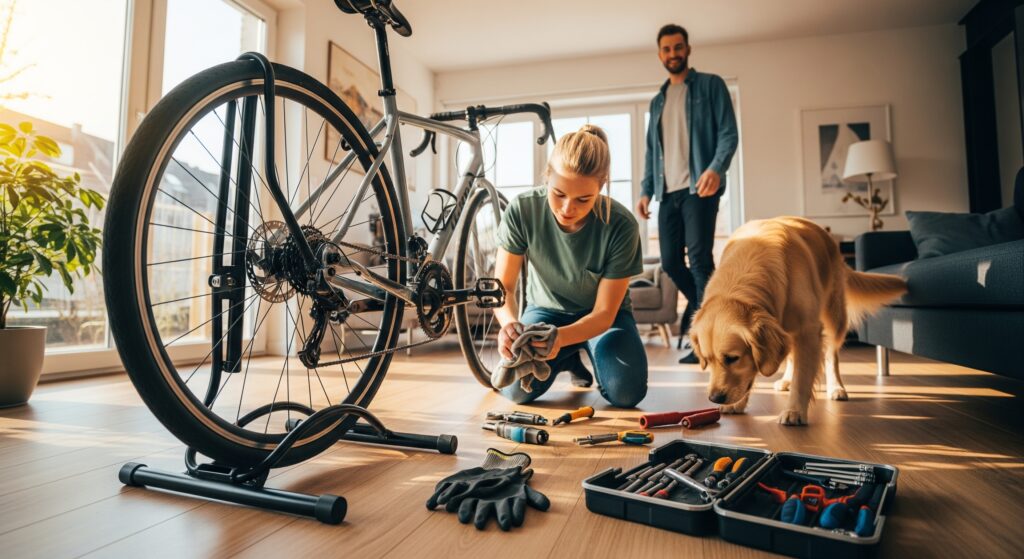
Owning a high-end bicycle is a bit like owning a fine watch or a sports car — it demands care, but rewards you with a kind of pride that’s hard to explain. If you’re expecting to ride thousands of miles, across seasons and terrain, your relationship with the bike doesn’t end at the cash register. It deepens.
And here’s the human truth: the more you maintain your bike, the more it gives back.
Routine Maintenance — The 5-Minute Rituals That Make You Faster
Don’t underestimate the power of the little things. A quick wipe-down after a wet ride. A chain lube every few weeks. These rituals aren’t chores — they’re acts of respect. And they preserve performance.
Your core checklist:
- Clean and lube the chain every 100–150 miles (more if it’s wet or dusty)
- Check tire pressure before every ride
- Inspect brake pads and rotors weekly
- Torque check bolts monthly (especially on carbon bikes)
- Get a full tune-up at least once per season
Invest in a good bike stand and a decent toolset. Or, better yet — find a local mechanic you trust, and build a real relationship.
Carbon, Titanium, and the Myth of “Maintenance-Free”
Let’s kill a myth: just because a bike is expensive doesn’t mean it’s worry-free.
- Carbon: Incredibly light and strong, but it hides damage. Always inspect after crashes or transport.
- Titanium: Resistant to rust and wear, but bolts and components still need love.
- Electronic drivetrains: Super precise — but they need firmware updates, battery checks, and cable hygiene.
- Hydraulic brakes: Powerful, but they require bleeding and pad swaps regularly.
High-end bikes reward maintenance with ride quality. Neglect them, and you’ll start to feel every squeak and misalignment like a pebble in your shoe.
Resale Value — Why Maintenance = Money
Here’s something most riders overlook: well-maintained bikes retain value. Keep service records. Store indoors. Clean it regularly. That $8,000 build might still fetch $5K on the used market — if it looks and feels loved.
Bonus: many buyers are happy to pay more for a bike that’s clearly cared for, even if it’s not the absolute top spec.
FAQ — What’s the most expensive part of bike maintenance long-term?
Q: Which components should I expect to replace most often — and budget for?
A: Tires and brake pads go fastest, especially if you ride aggressively or in bad weather. Chains and cassettes wear down with mileage, and electronic drivetrain parts aren’t cheap. Expect to spend $200–500 annually on maintenance if you ride frequently, or more if you log serious mileage.
Conclusion: Embarking on Your Cycling Journey
So here you are — on the edge of a decision that’s both practical and personal. You’ve parsed the specs, weighed the materials, tried to decode the lingo. But deep down, you’re chasing something bigger than watts and grams. You’re after a feeling — that instant of perfect connection between rider and machine.
And honestly? That’s what a high-end bicycle delivers. Not because it’s expensive, but because it’s yours — built around your goals, your body, your roads, your story.
Remember: the best high-end bike isn’t necessarily the lightest, the flashiest, or even the most expensive. It’s the one that disappears beneath you, that makes you forget about effort and focus instead on the ride. On the sunrise. On the next curve. On the quiet hum of wheels on asphalt.
You’re not buying a product. You’re investing in motion. In freedom. In possibility.
So take your time. Ask questions. Test, tweak, repeat. Then, when it all clicks — commit fully. Because once you find your bike, every ride becomes a story worth telling.
